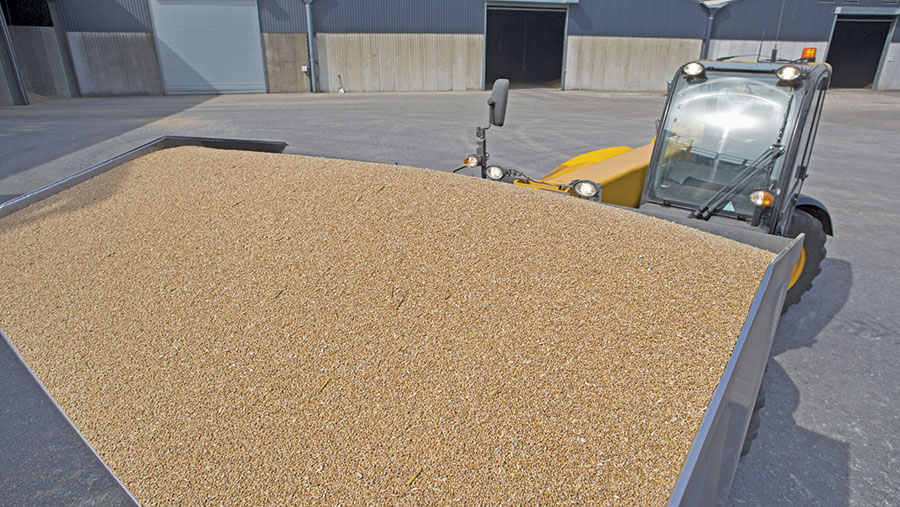Wheat prices continue gentle rise
 © Juice/Rex/Shutterstock
© Juice/Rex/Shutterstock Grain prices continue to rise slowly as more crop and outlook information becomes known.
Feed wheat values put on another pound in the week to Wednesday (27 September), averaging £133.3/t ex-farm for October.
However, this hides a huge regional range from £127/t ex-farm in Essex and Hertfordshire to £144/t ex-farm in north-east Scotland.
The feed wheat-feed barley price gap is also in a wide range between £10 and £23/t. Feed barley prices midweek were in a narrower range than wheat, at £116/t to £121/t ex-farm, with the highest values again in north-east Scotland and the Borders.
See also: EFA rules – changes and options explained
Premiums
The breadmaking milling wheat premium averaged £13.50/t on Wednesday as Farmers Weekly went to press, with October worth £142-£153/t ex-farm and premiums here also ranging widely, with a high feed base price in the North and North East.
“It does appear that nationally there is enough wheat of milling quality to satisfy demand, but there might not be enough in certain regions, which means that wheat will have to travel further than normal to fulfil this demand,” said Gleadell managing director David Sheppard.
“This is a particular factor in the central South and South-West milling wheat markets.”
It is clear the UK will be a net importer of grain in the current season and a slightly stronger pound is keeping UK grain out of the range for export business.
With field work, grain conditioning, and for some the last of the harvest, taking priority, farmer selling is slow.
Buyers are interested only in securing grain for nearby months, conscious that if sterling strengthens further, imports will be more competitive and local prices will come under pressure.
Russian rain
Wider grain trade factors have added to the slight firming in the market. A forecast for heavy rain across Russia brought concern for the 2018 crop, as the country’s agriculture ministry announced that extra stock would be withheld from the market as a precaution.
However Russia still has a 40m tonne exportable surplus, point out traders and the announcement was followed by analyst SovEcon’s expectation that Russia’s sowing target would be exceeded, with early sowings going well.
Logistics would be the main challenge for Russia’s export progress, said Openfield head of sales and trading David Doyle.
After dry conditions earlier in the year, there is also uncertainty over the size of the Canadian wheat crop which is set to be lower than last year. Dry weather in Australia and rain in Argentina are further issues.
Grain market factors
- Large Russian crop and aggressive stance on export markets
- Pressure building on EU wheat as exports business is difficult to secure
- Wide range of prices in UK depending on regional availability and demand
- Buyers looking only for nearby delivery months
- Weather uncertainty over Canadian, Australian and Argentinian crops
